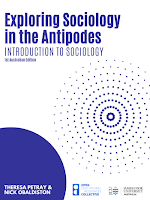This year on 25 August it will have been 30 years since the Commonwealth Government officially acknowledged the status of Australian South Sea Islanders as a separate and distinct cultural group. This group includes the direct descendants of those from up to 80 different islands in the Pacific who came to Australia between 1863 and 1904 as indentured labourers in primary industries like sugarcane, the majority of whom were kidnapped or tricked (Queensland Government, 2024). However, as the Queensland Museum’s 2024 Say our Name: Australian South Sea Islanders exhibition so succinctly points out, the legacy and experiences of Australian South Sea Islanders are far more than “just sugar”.
In 2024 this day sits within Multicultural Queensland Month, and there are a number of ways to mark this important day in our regional and national history and to learn more about the traditions, histories and lived experiences of Australian South Sea Islanders:
- You can learn more about Australian South Sea Islander Recongition day through this blog post written by (Waksam) Emelda Davis, current chairwoman of the Australian South Sea Islanders (Port Jackson),
- Explore JCU Library Special Collection's materials pertaining to Australian South Sea Islander history, such as the digitized Register of Pacific Islanders, part of the 50 treasures collection (read more about it's significance in Emeritus Professor Clive Moore's blog post),
- Read about the currently underway JCU Research Project that aims to delve into the lived experiences of Australian South Islanders through 'tok stori', a traditional Melanesian storytelling method,
- Check out the Queensland State Library’s online Australian South Sea Islander exhibition and
- View the online Australian South Sea Islander resources (including those for use in the classroom) provided by the National Museum Australia.
This book was developed within the JCU Open Educational Resources Program, a project in the Education Division
spearheaded by JCU Library. The aim of the project is two-fold:
- To support lecturers in adopting, adapting and creating Open Educational Resources including textbooks and workbooks in order to better support the learning of our students at JCU
- To make information about the people and places of the Tropics more widely accessible and understood. More than 40% of the world's population live in the Tropics and 40% of the world's surface is within the Tropics, but the area is often underrepresented in teaching materials.


Comments